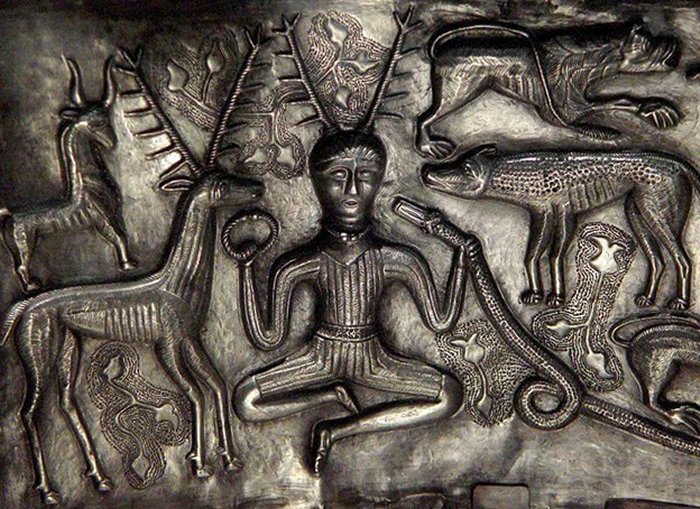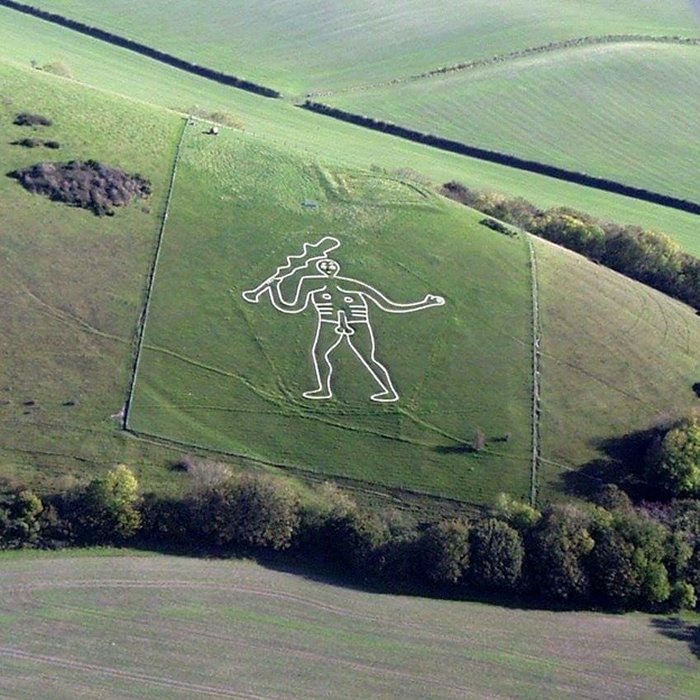God Dagda – A Powerful Leader Of The Tuatha De Danann In Celtic Mythology
Thalia Lightbringer - AncientPages.com - The Dagda was an ancient god of the earth, originally an agricultural god. When Christianity became dominant in Ireland, the Dagda became a comical figure, a brute giant with a huge gut. This was poor treatment of this respected god of many talents, called the "Good God" or "Shining" in old Celtic myths.
There are many stories of the Dagda showing he was originally one of the best of the gods and should be remembered as such.
Aspects of the Dagda, compiled by Thalia Lightbringer/ancientpages.com
Who Was The Dagda?
The Dagda had several titles, but apparently his original name was a mouthful. In the Cath Maige Tuired, he reveals that his true name is Fer Benn ("horned man"), like the horned god of the forest, Cernunnos. But Dagda continues, relating that his complete name is Fer Benn Bruach Brogaill Broumide Cerbad Caic Rolaig…and it goes on!
Gundestrup antlered figure, derivative work- Public Domain - CC BY-SA 3.0
The Dagda was called Eochaid Ollathair the "All-Father," not because he was the father of all the people, but rather because he acted as a father, a protector of all. This makes it tempting to compare him to the Norse god Odin, but the Dagda is more like warrior Thor, the Thunderer, with his mighty weapon. The Dagda's mother was the great goddess Dana, a sort of "All-Mother." His father was Elatha, king of the Fomorians. Among his brothers was Ogma, the god of poetry. Another is Ler or Lir, a personification of the sea.
One of Dagda’s titles is Ruad Rofhessa (mighty red one or noble lord of great knowledge), giving him an association with the druids. This also shows that far from being a figure to laugh at, he was considered extremely wise and powerful. Other important titles were Samildanach (meaning he had many skills or talents) and Cera (indicating he was a creator god).
The Dagda was one of the eldest of the Tuatha de Danann, the Children of Danu (or Dana). But the Dagda was not their first leader. Their first king in Ireland was Nuada, who wielded the Sword of Light, one of the four great treasures. When fighting for land with the Fir Bolg, Nuada lost an arm.
The physician Dian Cecht (sometimes said to be a son of the Dagda) fashioned him a working artificial hand out of silver and he became "Nuada Silverhand,” but could no longer be king. The tradition of those times was that the leader had to be physically perfect.
Conflict With The Fomorians
Despite the traditional rivalry against the Fomorians, an adopted half-Fomorian named Bres mac Elathan then became king of the Tuatha. It was a short rule. The Fomorians imposed difficult conditions, requiring great tribute, making the people resentful. Dian Cecht's son Miach found a way to regrow Nuada’s arm and his kingship was restored. He ruled for another twenty years.
Bres attempted to retake the kingship, teaming up with the Fomorian Balor of the Evil Eye. Before the great battle, Nuada asked his people what powers they would bring to his aid. After listening to them all, the Dagda claimed he would wield all of those powers at once himself. Then all exclaimed he was the "Good God" (Dagda), which is how he gained that name.
The Dagda helped to win the war by spying on the enemy camp before the battle. When returning at Samhain, he saw the Morrigan bathing in a river. They had a fling, conceiving Brigid, goddess of healing. Then the Morrigan gave Dagda a prophecy of the Fomorian battle plan, predicting victory over Balor.
Nuada put Lugh of the Long Arm in charge of leading the Tuatha and he triumphed using his great spear, another of the four treasures. The Dagda had a huge club which could kill nine men in one blow and could restore life with the other end. This great club of wrath (lorg mor or lorg anfaid) took out many enemies. However, in this battle, Nuada was beheaded and killed. Lugh then became the leader.
Magical Treasures
After Lugh, the Dagda reigned about seventy or eighty years. The Dagda possessed another of the great treasures, the Cauldron of Plenty, which is never dry or empty of food and could also be used to restore life to fallen warriors.
Dagda, o bom deus, by Jordan Brito - Public Domain - CC BY-SA 4.0
After Lugh, the Dagda reigned about seventy or eighty years. The Dagda possessed another of the great treasures, the Cauldron of Plenty (the coire ansic, or cauldron which is never dry), sometimes referred to as the Undry. It was never empty of food and could also be used to restore life to fallen warriors.
The Dagda was called a god of music because he played a magical harp called the Uaithne, also known as "the Four Angled Music," made of oak and richly ornamented with jewels. The Dagda was said to be able to control time and the seasons with Uaithne. This was how he stopped the sun when his lover Boann was pregnant with his son Angus Og. The harp’s music could command order in battles or play three types of music which caused the emotion, inspiring great sorrow, joy, or sleep and dreaming.
When Fomorians stole the harp, the Dagda discovered the keep where it hung upon a wall. The harp magically flew to his hand when he called it, killing nine men. Dagda then used Uaithne, causing his enemies to cry and laugh uncontrollably, then to fall asleep and dream.
The Dagda had other affairs and fathered Bodb Derg (who became king after him), Cermait who tried to steal Lugh's wife and was killed for it, possibly Aed, lord of the Underworld, and Midir of Bri Leith, who figures in the intriguing story of the Three Etains.
The Dagda was seen as a god of plenty due to his cauldron, as well as his fruit trees at Newgrange which always bore fruit and two pigs, one always growing and the other perpetually roasting. The Dagda is also linked with several other places. The Cerne Abbas Giant in Dorset, England is thought to depict him.
The Cerne Abbas Giant by PeteHarlow - Public Domain - CC BY-SA 3.0
Because of the magical harp with which the Dagda could control time and the seasons, he has been seen as a solar god of fertility and abundance, protecting the crops. Some sources link him with the harvest gods Crom Cruach and Crom Dubh.
Despite the crude picture painted of the Dagda in later times, it is clear from the stories that he was considered worthy by many women to have children with, a great warrior, and very knowledgeable. He was a god-like Lugh with an unbelievable number of skills and powers. He was one of the greatest of the Tuatha de Danann and deserves to be portrayed with respect.
Updated on March 16, 2024
Written by – Thalia Lightbringer – AncientPages.com Staff Writer
Copyright © AncientPages.com All rights reserved. This material may not be published, broadcast, rewritten or redistributed in whole or part without the express written permission of AncientPages.com
Expand for referencesReferences:
Celtic Myth and Legend: Poetry & Romance, by Charles Squire, 1905 (Original Title: The Mythology of the British Islands; and introduction to Celtic Myth, Legend, Poetry and Romance, published London, Blackie and Son Limited [1905])
Cath Maige Tuired: The Second Battle of Mag Tuired, Translated by Elizabeth A. Gray, 1982, Irish Texts Society, Kildare
Cuchulain of Muirthemne: The Story of the Men of the Red Branch of Ulster, arranged and put into English by Lady Augusta Gregory, with a preface by W. B. Yeats, London, J. Murray, 1902
Gods and Fighting Men: The Story of the Tuatha De Danaan and of the Fianna of Ireland, arranged and put into English by Lady Augusta Gregory, with a preface by W. B. Yeats, London, J. Murray, 1904
The Encyclopedia of Celtic Mythology and Folklore, by Patricia Monaghan, 2004, published by Facts On File, Inc., New York, NY
More From Ancient Pages
-
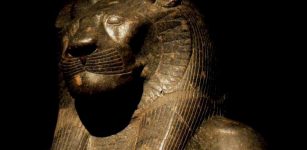 66 Diorite Statues Of Lion-Headed Goddess Sekhmet Discovered In Luxor, Egypt
Archaeology | Mar 9, 2017
66 Diorite Statues Of Lion-Headed Goddess Sekhmet Discovered In Luxor, Egypt
Archaeology | Mar 9, 2017 -
!["That most enduring of romantic images, Aristotle tutoring the future conqueror Alexander".[147] Illustration by Charles Laplante [fr], 1866](https://www.ancientpages.com/wp-content/uploads/2017/06/aristotleraslexanderlyceum-307x150.jpg) Aristotle: First Book Collector Who Assembled The First Great Library Of Antiquity
Featured Stories | Jun 23, 2017
Aristotle: First Book Collector Who Assembled The First Great Library Of Antiquity
Featured Stories | Jun 23, 2017 -
 On This Day In History: Statue of Liberty Arrived In New York Harbor – On June 17, 1885
News | Jun 17, 2016
On This Day In History: Statue of Liberty Arrived In New York Harbor – On June 17, 1885
News | Jun 17, 2016 -
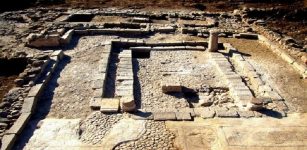 2,000-Year-Old Ruins In Mary Magdalene’s Town Of Magdala On The Shore Of The Sea Of Galilee
Biblical Mysteries | Dec 26, 2014
2,000-Year-Old Ruins In Mary Magdalene’s Town Of Magdala On The Shore Of The Sea Of Galilee
Biblical Mysteries | Dec 26, 2014 -
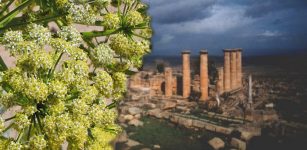 Silphium – Remarkable Ancient Herb That Mysteriously Vanished
Ancient Traditions And Customs | Jul 10, 2021
Silphium – Remarkable Ancient Herb That Mysteriously Vanished
Ancient Traditions And Customs | Jul 10, 2021 -
 Evidence Of Frightening Rituals Practiced By Ancient Steppe Nomads In Siberia – Discovered
Archaeology | Sep 19, 2020
Evidence Of Frightening Rituals Practiced By Ancient Steppe Nomads In Siberia – Discovered
Archaeology | Sep 19, 2020 -
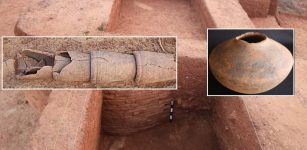 2,000-Year-Old Trade Center: Brick Structure, A Vishnu Sculpture Among Findings In Andhra Pradesh
Archaeology | Nov 6, 2019
2,000-Year-Old Trade Center: Brick Structure, A Vishnu Sculpture Among Findings In Andhra Pradesh
Archaeology | Nov 6, 2019 -
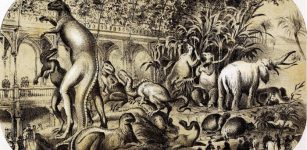 New Study Reveals Who Destroyed New York’s First Dinosaur Museum
News | May 29, 2023
New Study Reveals Who Destroyed New York’s First Dinosaur Museum
News | May 29, 2023 -
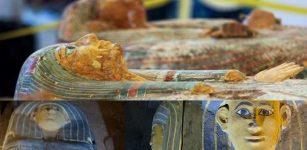 Three 3,500-Year-Old Painted Wooden Coffins Discovered In Luxor, Egypt
Archaeology | Dec 3, 2019
Three 3,500-Year-Old Painted Wooden Coffins Discovered In Luxor, Egypt
Archaeology | Dec 3, 2019 -
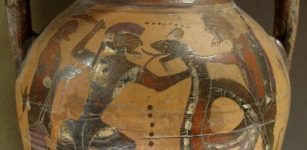 Cadmus – Legendary Phoenician Hero And Founder Of Prosperous City Of Thebes
Featured Stories | Sep 6, 2023
Cadmus – Legendary Phoenician Hero And Founder Of Prosperous City Of Thebes
Featured Stories | Sep 6, 2023 -
 Modern Humans Did Not Enter Europe By Sea – New Study Says
Archaeology | Mar 7, 2022
Modern Humans Did Not Enter Europe By Sea – New Study Says
Archaeology | Mar 7, 2022 -
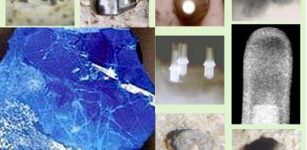 Controversial Artifacts No One Wants To Examine Thoroughly: Is There Something We Are Afraid Of Discovering?
Ancient Technology | May 22, 2019
Controversial Artifacts No One Wants To Examine Thoroughly: Is There Something We Are Afraid Of Discovering?
Ancient Technology | May 22, 2019 -
 Maat – Ancient Egypt’s Most Important Religious Concept
Egyptian Mythology | Apr 4, 2018
Maat – Ancient Egypt’s Most Important Religious Concept
Egyptian Mythology | Apr 4, 2018 -
 Echo And Narcissus: Cursed Ability To Speak And Punishment Of Selfish Love And Vanity
Featured Stories | Feb 9, 2021
Echo And Narcissus: Cursed Ability To Speak And Punishment Of Selfish Love And Vanity
Featured Stories | Feb 9, 2021 -
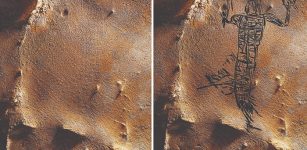 3D Scans Reveal Thousands Of Never-Before-Seen Ancient American Rock Art Images In Alabama Cave
News | May 5, 2022
3D Scans Reveal Thousands Of Never-Before-Seen Ancient American Rock Art Images In Alabama Cave
News | May 5, 2022 -
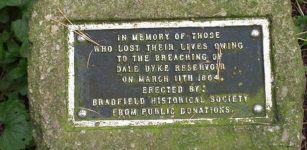 On This Day In History: Great Sheffield Flood – Largest Man-Made Disaster Occurred In England – On Mar 11, 1864
News | Mar 11, 2017
On This Day In History: Great Sheffield Flood – Largest Man-Made Disaster Occurred In England – On Mar 11, 1864
News | Mar 11, 2017 -
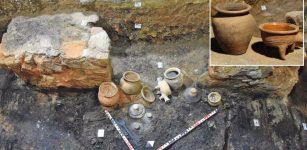 Uniquely Well-Preserved Medieval Kitchen Unearthed North of Moravia
Archaeology | Aug 11, 2022
Uniquely Well-Preserved Medieval Kitchen Unearthed North of Moravia
Archaeology | Aug 11, 2022 -
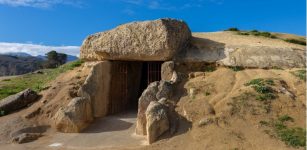 Why Is The Mysterious Menga Dolmen One Of The Greatest Neolithic Engineering Achievements?
Archaeology | Dec 6, 2023
Why Is The Mysterious Menga Dolmen One Of The Greatest Neolithic Engineering Achievements?
Archaeology | Dec 6, 2023 -
 Almost 1000 Previously Undiscovered Prehistoric Barrows Identified In The Netherlands
Archaeology | Oct 15, 2024
Almost 1000 Previously Undiscovered Prehistoric Barrows Identified In The Netherlands
Archaeology | Oct 15, 2024 -
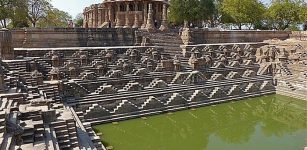 Ancient Stepwells Of India: Symbol Of Sacred Water And Boundary Between Heaven And Earth
Civilizations | Jan 11, 2019
Ancient Stepwells Of India: Symbol Of Sacred Water And Boundary Between Heaven And Earth
Civilizations | Jan 11, 2019


